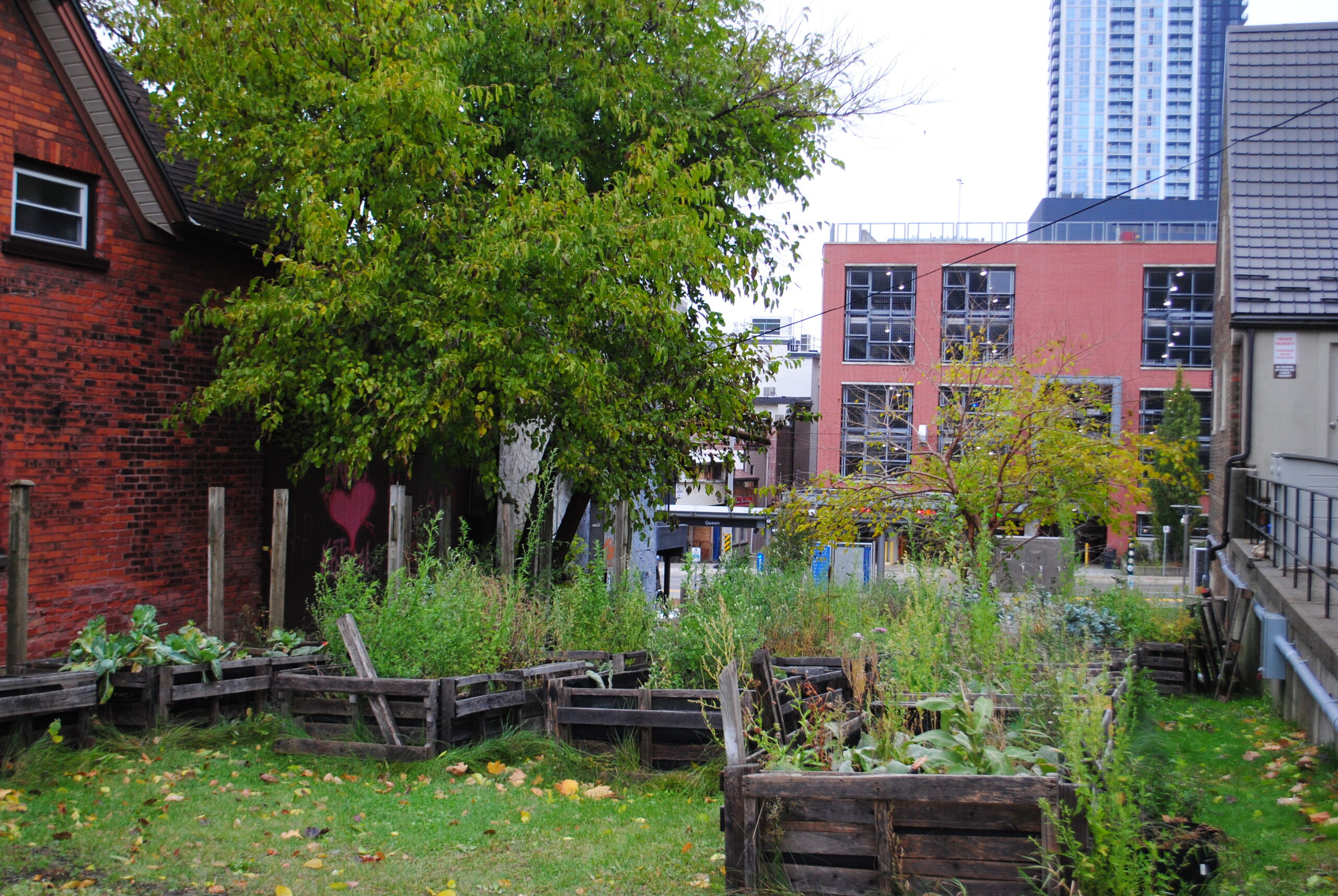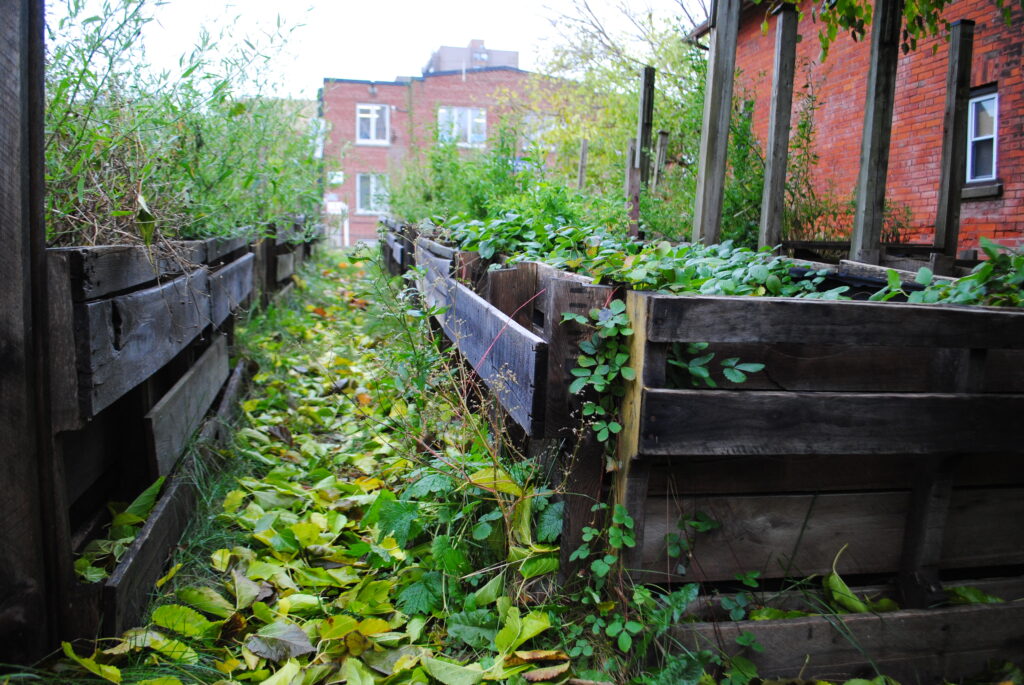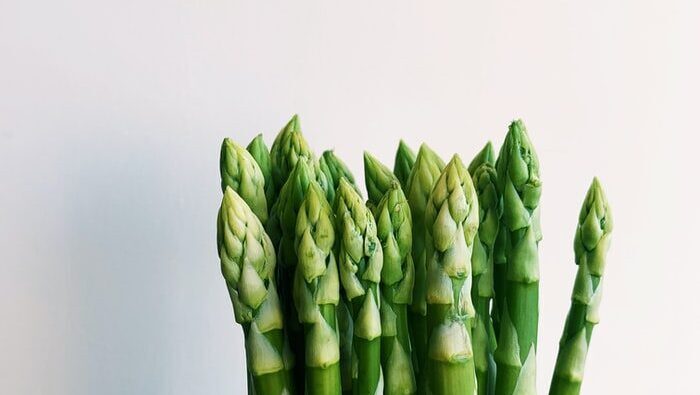Lead Author: Emily Woodall
Co-Authors: Anna Mahler and Shifra Fern-Weinbren
Published: November 24, 2023
Tucked behind the northside of St. Matthews Lutheran Church amongst the hustle and bustle of downtown Kitchener one can find a small community garden made of up-cycled wooden pallets and, to the untrained eye, a plot of weeds and overgrown plants. To the keepers of this community garden, however, there is nothing but remedies to some of the major issues facing society.


As a fourth-year environment class studying the regional food system at the University of Waterloo, we visited this space to learn about the physical and metaphorical seeds that are being planted and the roots that are growing here. We met with Ashley Hynd who conceptualized and started the garden and facilitates building connections in the garden. She spoke about her perspective on food sovereignty with an Indigenous lens which was impactful to our academic discussions. This experience, however, for many of us was also a spiritual experience through which we were able to develop a deeper understanding and connection to Mother Nature.
In 2020, Ashley had a vision of what this plot of land that she passed by daily could become and how it could benefit the community. In discussing her idea for a community garden with St.Matthews Lutheran Church which has jurisdiction over the land, she was granted permission and, with a grant for Indigenous food sovereignty initiatives, she began to bring her vision to life.
Ashley explained how the garden has transitioned since the beginning in 2020. In the early stages, the garden had a greater focus on food provisioning and growing conventional food. However, the following year, it was no longer manageable to continue with this model due to financial and logistical constraints. Nonetheless, what grew next was, debatably, more needed in the community in terms of addressing a wider set of crises.
Nurturers of the garden, instead of ripping out what was naturally growing, started to observe and listen to the land and accept what was being offered. What was learned was that Mother Nature knows what we need and She will give it to us. The plants that started to poke out of the soil naturally offered what was needed in the community. For example, many of the plants are not recognized in their natural form by Western medicine or the public healthcare system to have medicinal benefits. Some of the plants that appeared can be used for opioid addiction, soap, stress management, nutrient deficiencies, and hormone balancing. Typically these plants are overlooked and denied simply because they are not understood.
Something that stuck with the class was the emphasis that Ashley put on how food sovereignty is more than just the food that is required to feed people’s stomachs but includes feeding people’s souls and building community and connection. While the ability to access healthy and culturally appropriate food is important, connections build community and are often in deficit in today’s society. The garden provides a space for people to come together to connect to nature and learn what is needed from one another with food and plants being the connection point.
While funding is often required to maintain a community garden such as this one, much of the funding available does not support the entire breadth of Indigenous food sovereignty. Yet those at the forefront of these initiatives can not simply dedicate all their time to them because of societal systems that require earning money in so-called conventional ways. Food, which in Indigenous culture ought not to be commodified and encompasses so much more than just what we consume, is bound tightly to oppressive, colonial, capitalist systems. What we can learn from this is that reconciliation and Indigenous food sovereignty require greater systemic change which cannot be achieved in a world where Indigenous values and perspectives are second to Western ones. Perhaps what we need to do on a large scale is listen to the land to discover that what we need isn’t always as straightforward as we think – that what we need isn’t just more food for more people. What we need is a greater sense of connection to ourselves, each other, and to the land.

